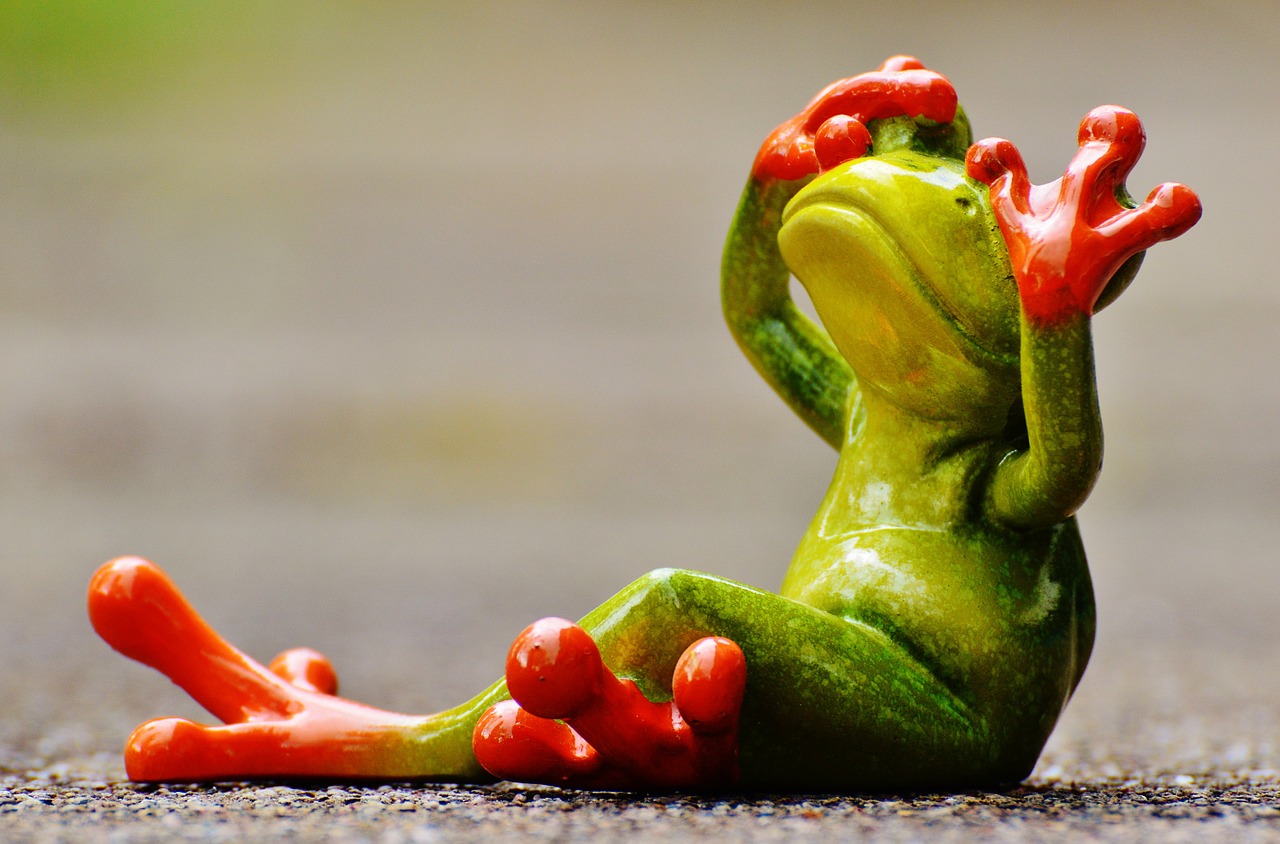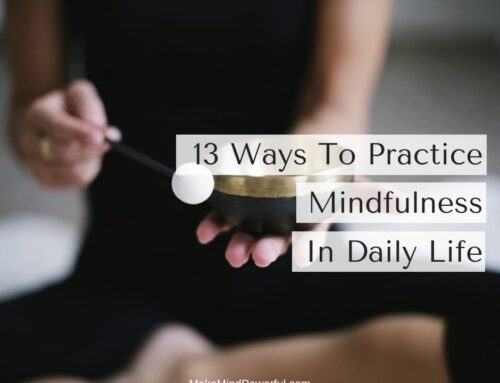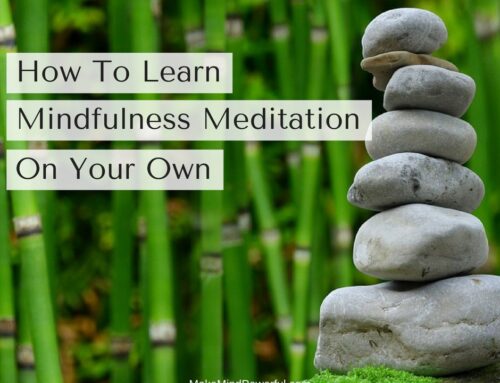I decided to take a short break on chunking out a huge list of meditation tips and sit back and blog my mind on mindfulness practice (and hopefully being mindful in the process).
I was asked “What Is Mindfulness In One Sentence” in Quora. I gave a simple answer :
“To truly be aware of your thoughts, emotions, and sensations so that you live at the present moment instead of troubled by your past regrets and future worries.”
(I may have a different definition as my journey of mindfulness goes on.)
Even mindfulness meditation is simple. You probably get instructions like
- Close your eyes
- Watch your breath
- If your mind wanders, return to watching your breath
- Do this for 10-15 minutes.
Some readers said it’s hard. Well, things are not easy in the beginning. It takes about 2-3 months of constant practice for a smooth meditation session. Eventually, it gets easier once you got the hang of it.
You thought you have mastered mindfulness.
Then You Bring Mindfulness Into Your Daily Routine…
And you felt like you’ve never meditated before.
Why?
Because now you have an element you never dealt with in your meditation (at least not in most practice).
Visual. Seeing. (because you don’t close your eyes in your daily activities)
Remember how you closed your eyes during meditation?
So now you are taking on daily chores with your eye open. Every single object you see is sending thoughts racing before you can shout “mindfulness”. You lay your eyes on a delicious seafood pasta like this,
and you got your mind thinking :
“Wow, I want to have it for tomorrow’s dinner“, “But it’s fattening“. “But I’m craving for it“. “I swear I’ll go on a diet after this” [no you probably won’t]. And whatever left of your mindfulness goes down the drain.
How do you deal with visual distractions when you’ve never practiced on that in meditation? (this gave me a new idea for a blog post).
We Are In A Different State When Not Meditating
When you’re doing proper meditation session, you got to have your meditation incense lighted, essential oils, meditation beads, comfortable meditation cushion and maybe an app like Headspace guiding you into mindfulness.
And you associate with all those tools that “you are doing meditation” and mindfulness becomes natural. Your meditation session is typically free of distraction (except your inner thoughts).
Take all these away and you will feel you’re in a different zone. What sounds like a simple mindfulness instruction (be aware of your thoughts), seems so far at the back of your mind.
You seem to forget how to be mindful. Especially when you are driving, eating, cooking, talking, working, meeting or even when reading a blog like this.
Don’t agree?
How many times does your mind wanders away when you are reading the last paragraph? Did you crave of foods when I mentioned cooking and eating? Or about the unresolved issues at work you had when I mentioned working and meeting?
See what I mean?
Be As Mindful As You Can.
How?
Forget about watching your breath. That’s what you do in practice but doesn’t work(most of the time) in your daily life.
As for the focusing on “what you see” as a mindfulness object? Forget about it. I can’t imagine walking through a shopping mall mentally calling out “seeing” on every single item I see.
Instead, choose to be aware of your thoughts. Are you tempted by your favorite limited edition shoes? Or how about the new smartphone that’s begging you to swipe your credit card for it?
If you are mindful of your thoughts, you would be avoiding making reckless purchases and getting yourself into unnecessary expenses (or debt).
Watch Your Thoughts Before You Speak
Here’s another simple but not easy mindfulness practice.
The tongue has no bone, but strong enough to break a heart. So be careful with your words.
How many times a have a slip of tongue gets you in trouble? If it takes more than your 10 fingers to keep track or you have a sarcastic tongue like mine, then it’s worth to learn how mindfulness can help keep regrets to the minimum (or save time explaining yourself to your loved ones).
Remember the practice of being aware of your breath, even if sometimes you struggle to feel the slightest sensation? And the never-ending exercise of bringing your monkey mind back to your breathing?
Use what you practiced to watch your thoughts before they form into words. As difficult as it is to be mindful when you are getting an overload of signals from all your senses, it is still easier than mending a broken heart.
Mindfulness Practice Is Simple…
When you know that watching the breathing part is like lifting weights in the gym. You don’t carry the weights to the street. You bring your strength with you. Your strength doesn’t desert you when you are out of the gym.

If you want a further good read on mindfulness practice, I’ll suggest you check out Wherever You Go, There You Are, a highly recommended book by Jon Kabat-Zinn, Founder of Mindfulness-Based Stress Reduction
(P. S.: If you enjoy reading this post and feel you have friends who can benefit from it, feel free to share with them.)
Over To You :
Have you lived a life buried in your past regrets or ever worrying about problems that may never happen? Or you have tried mindfulness meditation but struggled to bring mindfulness practice into your daily life? Or do you have regrets on how your thoughts often led you into troubles? Have your say here.
Related :
Mindfulness Could Have Prevented Me From Wrecking My Car, Twice (NEW)
Why Meditation Is Difficult For Certain Personalities
21 Mindfulness Meditation Tips To Keep Meditation Simple
Best Ways To Meditate When You Are Tired and Stressed








I enjoyed reading your mindfulness practice article. One thing that stood out are the visual distractions we have in our daily lives. It is one thing to be distracted, but it is important we be aware. It is easier said than done, but we must be observing without attaching emotion to what we observe. I think of it as cataloging. As we are in the moment, so are what we observe in the moment as well. The more focused we are on the present moment, the less likely either the past or future events will intrude into our minds.
Hi Glen,
You are definitely right. We have a choice not to let what we see bring us away from the present.
Cheers,
Kenny
I have been thinking of trying out meditation as I starting to get anger issues because of stress. It will be amazing to get my mind again to the point where I can see life in a better way. Thanks for the awesome site.
Hi Leo,
If you are stressed, try reading before you meditate.
Cheers,
Kenny
Hi Kenny
Your website is very informative as to what mindfulness is exactly. I would like to see more audio instruction for the folks who have bad eyesight. You have very good images and lots of color which is important. The language is very good, with only a couple English usage mistakes that I could see. I liked your theme. Easy to navigate from one section to another. Good luck with your website!
Hi Robin,
I’ll try to add in more audios in coming posts.
Cheers,
Kenny
WOW Kenny!
This is very interesting topic on Medition and Mindfulness.
You really dig into the real stuff for our wellbeing.
I mostly loved your definition for Mindfulness. I have taken it with me and will share it with your name as the author. 🙂
I have also taken note of the book, “WHEREEVER YOU GO, THERE YOU ARE.” Hope to pick it up to learn more on the practice of Mindfulness.
Let me also share with you about going through the day, I have learnt how to be aware of my emotions and feelings of things I attract during the day. And this helps put me on the right track very often.
Thanks so much for sharing!
Stay blessed!
Geraldine
Hi Geraldine,
Thanks for loving my site.
I’m glad that you are more aware of what’s going on within your mind now.
Cheers,
Kenny
Great post on mindfulness. Coincidentally, I just watched a video on mindfulness last night on YouTube with Michael Singer. (Untethered Soul & The Surrender Experiment) Now, I’ve read a ton of books on meditation, mindfulness and surrender, but this video on YouTube was the topper on the cake. I’ve watched it 3xs since discovering it. He’s got a different take on what it means. Just thought I’d share. Great post!
Hi Jackie,
I’ll check out the Youtube video. Thanks for sharing your thoughts here.
Cheers,
Kenny
thanks for the enlightening information on the proper techniques of doing mediation. I know for me my mind is always wandering and I do have a terrible time concentrating on things I need to be meditating on. I realize that I have to clean out my thinking while I am doing any type of mediation because I am always jumping from one thought to the other.
I will follow your suggestion and really put my mind to it and I will let you know.
thanks,
Angela
Hi Angela,
Taming the monkey mind requires patience. It’s not totally blocking our thoughts but more on coaxing the mind back to focus.
Thanks for reading.
Cheers,
Kenny
I don’t even have to meditate to know that it’s hard. My mind constantly wanders and sometimes it’s difficult to sleep when it just won’t rest when I want it to. I have lots of past regrets and deep seated anger which is hard to forget. Any suggestions on what to or not to do?
Hi Yvonne,
Dealing with past regrest and anger is no easy task. But it can be done.
I wouldn’t suggest you to rush into solo-meditation. Instead you could try some energy healing program. I can send you a link if you would like too. As for getting a better sleep, perhaps you want to consider reading this.
Hope it helps.
Cheers,
Kenny
Hi Kenny,
Thanks for this great post.
I find it really difficult to practice mindfulness but have been working extra hard on it. Even though i do meditate regularly and enjoy doing so, it really takes things to another level when you do not need to setting to be able to let everything go.
I enjoy reading and listening to Eckhart Tolle and find it amazing that when he underwent his transformation he cut back on 80% of his thinking, which led to a much more peaceful lifestyle.
Love and light
Vivia
Hi Vivia,
Bringing mindfulness into your daily life takes time and patience. It can be done. Don’t give up.
Cheers,
Kenny
love it time to rss your blog 🙂
Hi Dan.
Will be adding the Rss soon.
Cheers,
Kenny
I love how you used the example of lifting weights with mindfulness. That is a great analogy of how this all works. Just like we practice at the gym to have strength when we need it, the same goes for meditating and being mindful.
Recently I have started working on being much more mindful before I speak. I use the THINK acronym; is it True, is it Helpful, is it Inspiring, is it Necessary, is it Kind. This practice has already helped me have a positive influence on my life and has also helped me to be much more mindful.
Hi James,
Thanks for sharing your thoughts here. I’ve heard of the THINK method. It helps to keep our tongue to ourselves when we have nothing good to say. And save tears and arguments in the process.
Cheers,
Kenny
Hey Kenny! This is an awesome article. I think mediation is a great addition to anyone’s daily routine. I think my mother would definitely benefit from this as she is attending school at an older age. She is always stressed and I think this would be a great way for her to relax. I will have to show her this article 🙂 Thanks!
Hi Vanessa,
Thanks for loving my post and hope it helps your mother.
Cheers,
Kenny
I find mindfulness to be a very important practice, at least to me.
I’m constantly trying to observe my thoughts, actions and emotions.
I often ask myself: why do I think the way I think, why do I feel angry, why do I pass judgment on somebody, why do I feel these emotions – do they make sense, why do I give in to what my mind is telling me and so on.
I liked your answer you gave in Quora.
Hi Luke,
Mindfulness is a good practice in daily life.
Thanks for sharing your thoughts.
Cheers,
Kenny
Mindfulness meditation practice is fairly easy. Although, when you get to the point where you want to start practicing during the whole day, things get hard.
In my opinion, mindfulness is like disabling the autopilot, which is extremely hard even for an experienced meditator. It is like being aware of everything that your senses pick up each moment, everything you do and everything you think, but focusing no where.
This is what comes to mind when I talk about mindfulness. Just being aware.
Hi Harry,
That’s exactly the point that I’m trying to say. A very simple concept yet may need years of practice. Even then, sometimes we tend to ‘forgot’ to be mindful and disaster awaits.
Cheers,
Kenny
I have read little bit about the practice of mindfulness and have also tried the meditation videos. I can testify to the fact that it is very hard to keep your mind from wandering. I am unfortunately notorious for worrying about the past and the future. I am definitely interested in this book to work on my meditation skills.
Hi,
Thanks for checking out. The trick is not to be frustrated and react emotionally to our wandering mind. The training to refocus, it will naturally learn to remain in the present.
Cheers,
Kenny